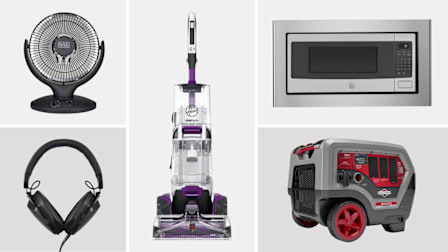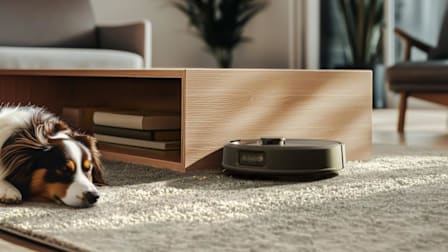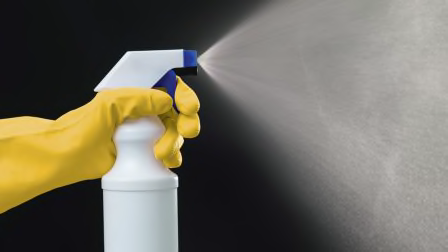Best Flooring of 2026, Lab-Tested and Reviewed
Our rigorous tests identify the most durable, scratch-, stain-, and fade-resistant flooring for every room in your home
When you shop through retailer links on our site, we may earn affiliate commissions. 100% of the fees we collect are used to support our nonprofit mission. Learn more.

Investing in flooring for your home can be tricky—it’s impossible to meet the needs of every room with just one type. While prefinished solid wood may work great in the living room, for busy, high-traffic areas you’ll want a surface that withstands scratches, spills, and dents. If a room gets strong sunlight, you’ll want flooring that resists color changes from ultraviolet exposure.
Best Prefinished Solid Wood Flooring
Prefinished solid wood flooring consists of factory-finished planks and is available in a variety of wood species. It adds the warmth and character of unfinished hardwood flooring, which is sanded and finished on site—but without the mess, fumes, or time spent waiting for the finish to dry. (CR doesn’t test unfinished floors; much of what we analyze is related to the finish.) As a whole, this category doesn’t perform well when it comes to dent resistance, with many products receiving unsatisfactory ratings in that test.
Best Engineered Wood Flooring
With engineered wood flooring, a layer of solid wood sits atop several layers of substrate, bound together by an adhesive. The substrate can be made of plywood, vinyl, or a composite like that used in laminates. Engineered wood flooring offers the look and feel of hardwood with one significant advantage: The substrate makes each plank less susceptible to seasonal shrinking and swelling than solid wood. That additional stability minimizes gaps between boards that can appear in dry conditions.
Best Laminate Flooring
A less expensive option than engineered planks is laminate flooring, which simulates wood. Laminate employs a photographic image of wood sealed on top of dense fiberboard. It comes in a variety of wood patterns, including oak, maple, and pine. It’s usually easy to install because most products allow you to float the material over another flooring surface, making it an ideal choice for quick upgrades.
Best Vinyl Flooring
Usually made of flexible PVC, vinyl flooring comes in squares or planks that can float or be glued in place or in sheets that need to be glued down (by a pro). Vinyl flooring offers a wide range of looks, including wood, stone, and patterned, to name a few.
Best Porcelain Tile Flooring
Porcelain tile can mimic marble, stone, hardwood, or handmade ceramic tile. It easily resists foot traffic, scratches, and stains but can crack or chip if hit by a heavy object.
If you’re considering porcelain tile for your kitchen, know that it’s hard on your feet. So if you’re standing a lot—say, while cooking—you may want to get a cushioned mat to provide some relief.
How CR Tests Flooring
To test flooring for foot-traffic wear, we rub abrasive paper discs back and forth against 6x6-inch flooring samples, checking for wear every 50 cycles. The best flooring is unscathed after 500 cycles or 50,000 abrasive rubs.
To test a floor’s resistance to denting, we drop a heavy, blunt weight that simulates a saucepan or large can of tomatoes, plus a lighter, pointier object that stands in for a dropped knife or fork. Our testers drop the weights from progressively higher release points, examining the flooring for visible damage after each drop. The higher the drop before damage becomes evident, the better a floor’s dent-resistance rating.
A floor’s water resistance is key to its longevity, and manufacturers are continually trying to improve their products’ impermeability. We check for water damage in two steps. First, we spill water on a flooring sample’s surface and allow it to sit overnight. Then we take another sample of the same flooring and completely submerge it in a bucket of water, again letting it remain overnight. The more a product swells, deforms, softens, or delaminates, the lower its water-resistance score.
We evaluate the potential for fading by exposing part of a flooring sample to ultraviolet rays for two weeks straight and then comparing the exposed portion with an unexposed portion. This shows us what happens over time to a section of flooring that gets more sunlight than the rest of a room.
Should You Install Your Own Flooring or Hire a Pro?
Whether you should install a new floor yourself or seek expert help depends both on the type of flooring you choose and your own level of DIY experience. Some materials can be installed simply, but others require a more involved process, such as being nailed or glued into place.
With a floating floor, the pieces click together to create one large puzzle and can be installed over an existing floor (assuming it’s flat and smooth). The weight of the material will keep it from shifting, and the walls will hold it in place. A floating floor has the advantage of being relatively easy to remove, which comes in handy if you make a mistake while you’re laying the floor or if you want to swap it for something different in the years to come. (To see whether your flooring can be installed as a floating floor, check out our flooring ratings, where we indicate how each product is installed.)
This approach doesn’t work with solid wood and porcelain tile, both of which attach directly to a subfloor. Wood is either nailed or glued, and tile is set in a bed of mortar. Professional installation is wise for both of these types.
































